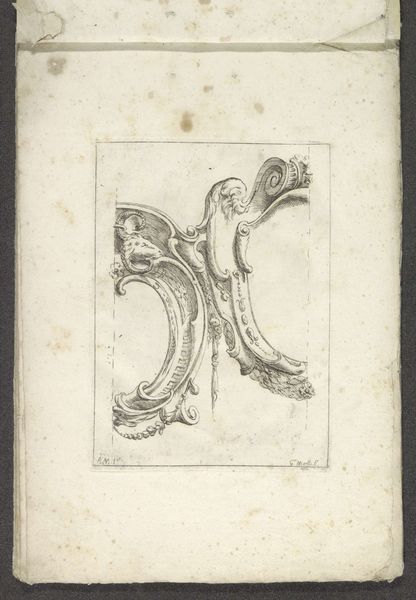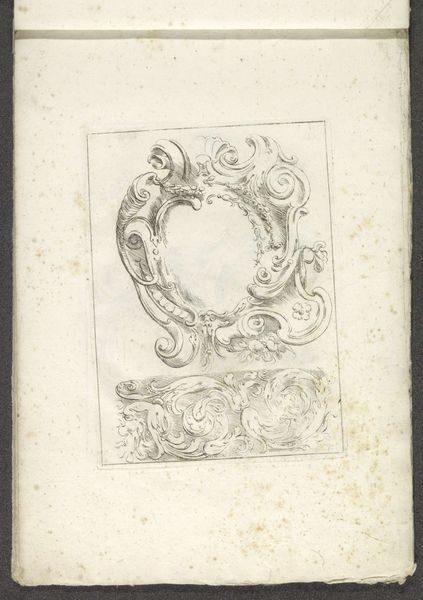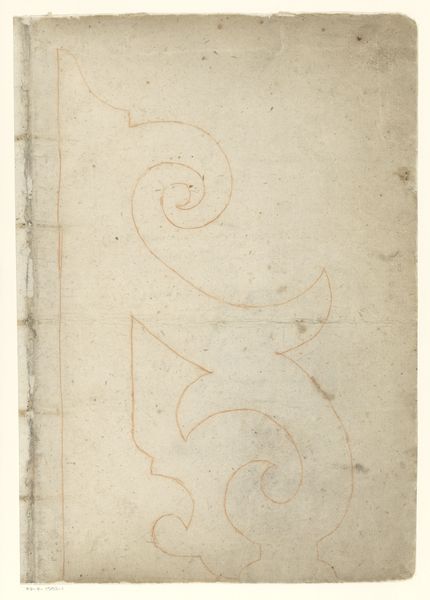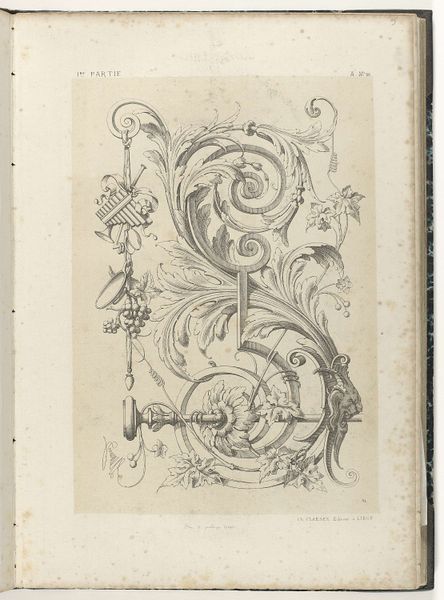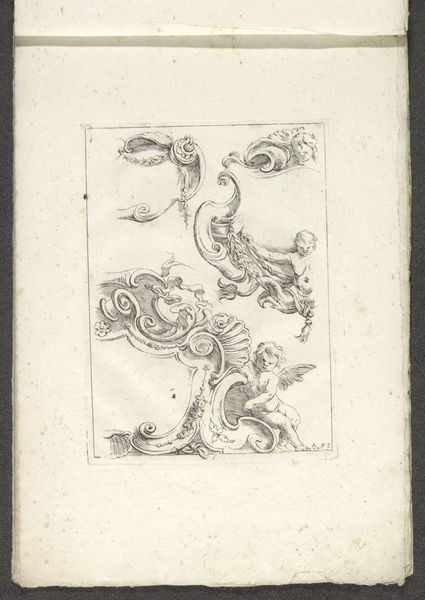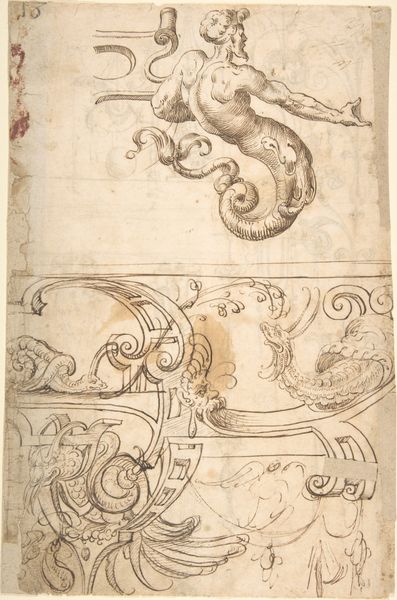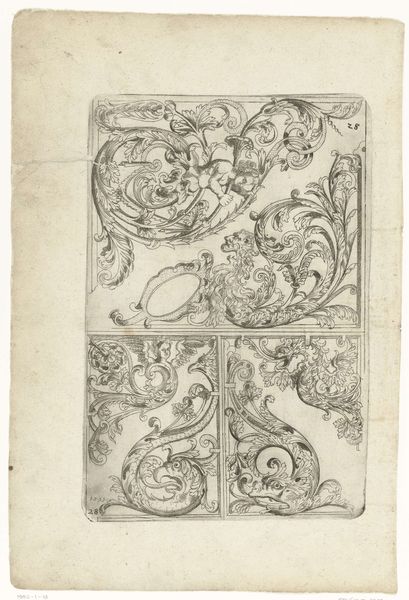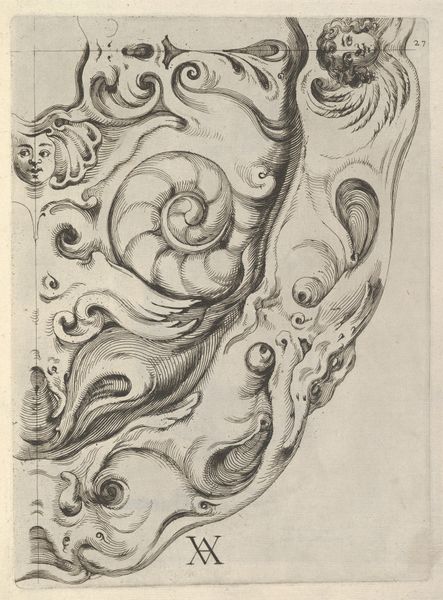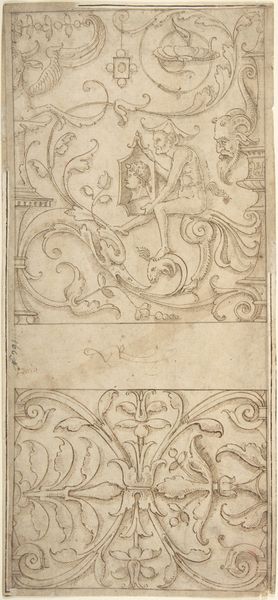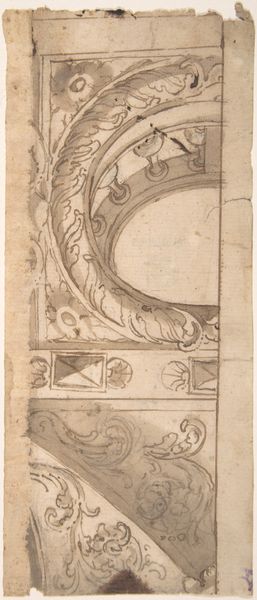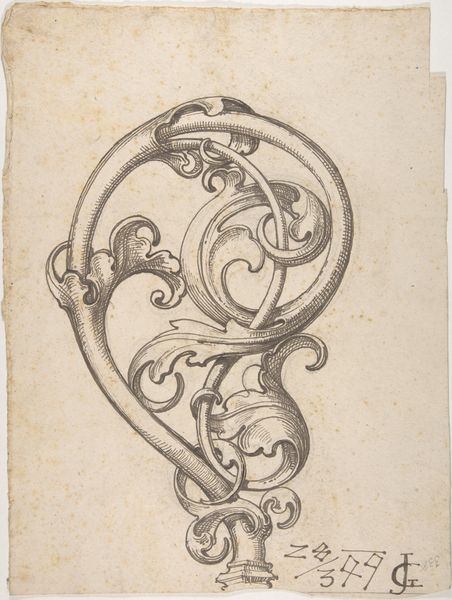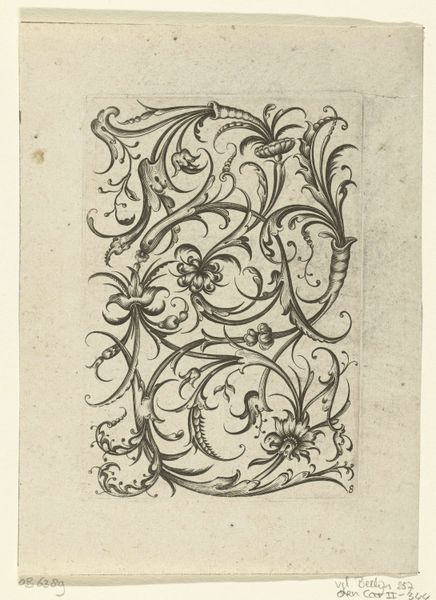
drawing, ink
#
drawing
#
baroque
#
pen sketch
#
form
#
ink
#
line
Dimensions: height 188 mm, width 136 mm
Copyright: Rijks Museum: Open Domain
Curator: This line drawing from the Rijksmuseum collection presents the right half of a cartouche, crafted with ink on paper sometime between 1644 and 1718, attributed to Giuseppe Maria Mitelli. What strikes you most about it? Editor: Immediately, it’s the tension. The flowing lines of the cartouche frame are at odds with the grotesque faces peering out. There’s an almost comical juxtaposition of elegance and something a bit unsettling. Curator: Indeed. Cartouches like this weren't merely decorative; they were statements. This example, born from the late Baroque period, embodies the era's taste for elaborate ornamentation. Cartouches would often contain inscriptions of familial or political significance, proclaiming the power of those they commemorated. Editor: And the fruit? Those apples—or are they pomegranates?—bursting from the bottom right. Fruit, of course, signifies abundance, fertility… a cornucopia of blessings, perhaps, for whomever the full cartouche was intended. Though, placing them with such peculiar faces, I can't decide if it speaks of beneficence, or something more mocking. Curator: That ambivalence might be exactly the point. Mitelli was working in a world saturated with visual symbolism, but also amidst intense social and political upheaval. This "Rechterhelft van een cartouche" might hint at the era’s complex relationship with power. While celebrating authority, Baroque art sometimes, subtly questioned it. This drawing’s purpose was certainly to be part of some commemorative symbol to public admiration and legacy. Editor: So, rather than pure ornamentation, it’s a visual battleground. The elegant form wrestles with darker imagery. These sort of pieces suggest a consciousness, aware of the inherent contradictions in structures of power and legacies. Curator: Precisely. It gives us insight into how visual elements of Baroque, and particularly commemorative Baroque, often reveal as much about the socio-political context from which it was extracted. It reminds me to always check who benefits from commemorative artifacts and aesthetics, and what political or social narratives their imagery reinforces. Editor: I agree entirely. This partial glimpse has completely altered my reading of the form of cartouches and heraldic forms as celebratory, demanding more historical scrutiny regarding function. Thank you for your knowledge, I certainly understand the intention in more detail now.
Comments
No comments
Be the first to comment and join the conversation on the ultimate creative platform.
